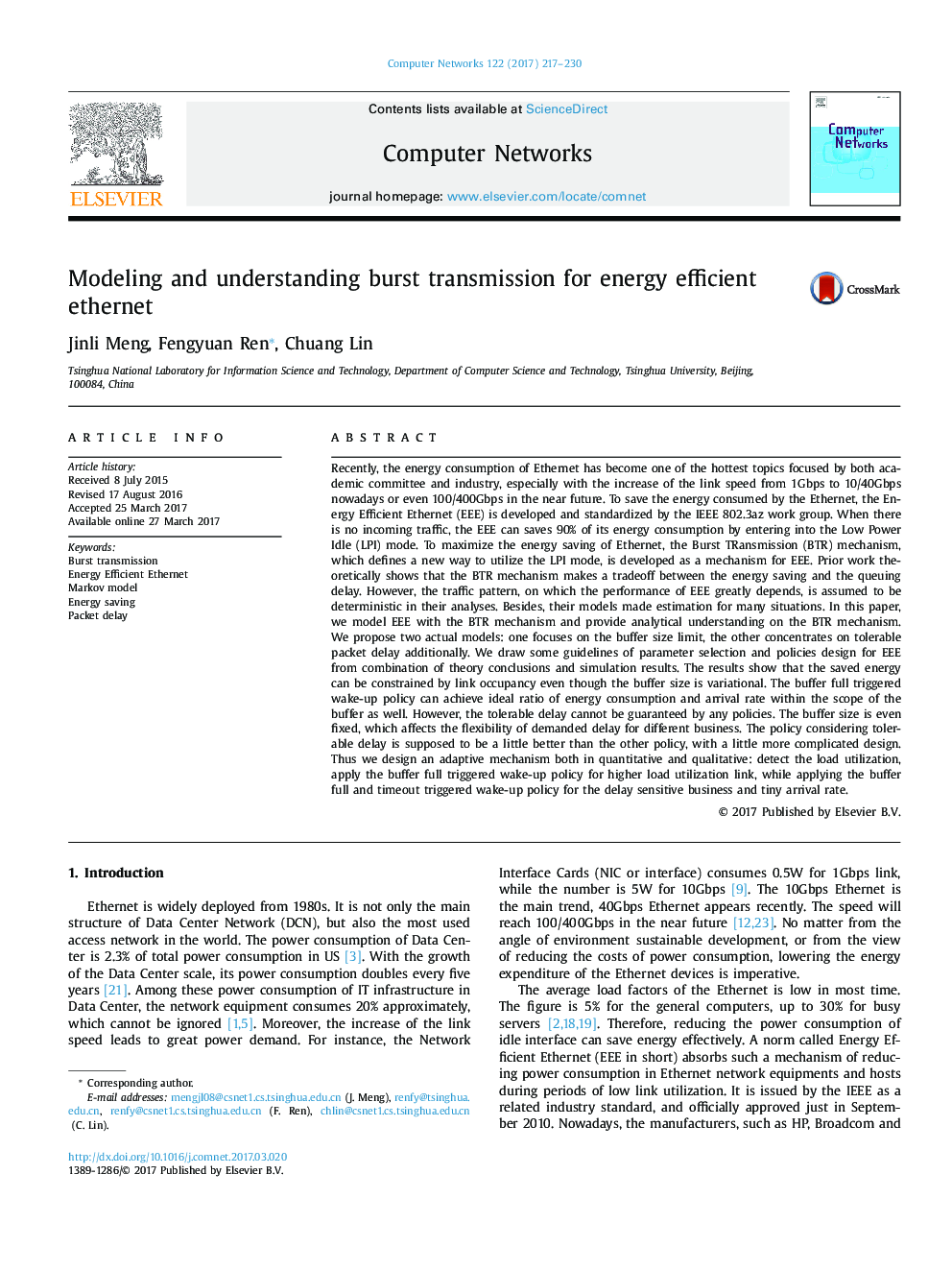| کد مقاله | کد نشریه | سال انتشار | مقاله انگلیسی | نسخه تمام متن |
|---|---|---|---|---|
| 4954597 | 1443898 | 2017 | 14 صفحه PDF | دانلود رایگان |
عنوان انگلیسی مقاله ISI
Modeling and understanding burst transmission for energy efficient ethernet
ترجمه فارسی عنوان
مدلسازی و درک فرکانس انتقال برای شبکه اترنت کارآمد
دانلود مقاله + سفارش ترجمه
دانلود مقاله ISI انگلیسی
رایگان برای ایرانیان
کلمات کلیدی
انتقال امواج، اترنت انرژی کارآمد، مدل مارکف، ذخیره انرژی، تاخیر بسته
موضوعات مرتبط
مهندسی و علوم پایه
مهندسی کامپیوتر
شبکه های کامپیوتری و ارتباطات
چکیده انگلیسی
Recently, the energy consumption of Ethernet has become one of the hottest topics focused by both academic committee and industry, especially with the increase of the link speed from 1Gbps to 10/40Gbps nowadays or even 100/400Gbps in the near future. To save the energy consumed by the Ethernet, the Energy Efficient Ethernet (EEE) is developed and standardized by the IEEE 802.3az work group. When there is no incoming traffic, the EEE can saves 90% of its energy consumption by entering into the Low Power Idle (LPI) mode. To maximize the energy saving of Ethernet, the Burst TRansmission (BTR) mechanism, which defines a new way to utilize the LPI mode, is developed as a mechanism for EEE. Prior work theoretically shows that the BTR mechanism makes a tradeoff between the energy saving and the queuing delay. However, the traffic pattern, on which the performance of EEE greatly depends, is assumed to be deterministic in their analyses. Besides, their models made estimation for many situations. In this paper, we model EEE with the BTR mechanism and provide analytical understanding on the BTR mechanism. We propose two actual models: one focuses on the buffer size limit, the other concentrates on tolerable packet delay additionally. We draw some guidelines of parameter selection and policies design for EEE from combination of theory conclusions and simulation results. The results show that the saved energy can be constrained by link occupancy even though the buffer size is variational. The buffer full triggered wake-up policy can achieve ideal ratio of energy consumption and arrival rate within the scope of the buffer as well. However, the tolerable delay cannot be guaranteed by any policies. The buffer size is even fixed, which affects the flexibility of demanded delay for different business. The policy considering tolerable delay is supposed to be a little better than the other policy, with a little more complicated design. Thus we design an adaptive mechanism both in quantitative and qualitative: detect the load utilization, apply the buffer full triggered wake-up policy for higher load utilization link, while applying the buffer full and timeout triggered wake-up policy for the delay sensitive business and tiny arrival rate.
ناشر
Database: Elsevier - ScienceDirect (ساینس دایرکت)
Journal: Computer Networks - Volume 122, 20 July 2017, Pages 217-230
Journal: Computer Networks - Volume 122, 20 July 2017, Pages 217-230
نویسندگان
Jinli Meng, Fengyuan Ren, Chuang Lin,
